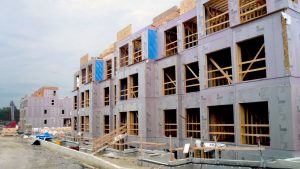The federal government has followed through on its 2016 commitment to ban asbestos with a series of regulations and other initiatives involving at least four different ministries to further control exposure to the carcinogen.
But construction and labour stakeholders say more remains to be done, and while praising the Liberals’ intentions, they are reserving judgment until they review the new rules more closely.
The new regulations announced Jan. 5 aim to prohibit the use, sale, import and export of asbestos and products containing asbestos, as well as the manufacture of products containing asbestos, a government statement explained.
Environment Canada has published proposed Prohibition of Asbestos and Asbestos Products Regulations under the Canadian Environmental Protection Act, and also introduced amendments to the Export of Substances on the Export Control List Regulations.
The announcement said the government is also establishing federal workplace health and safety rules to limit exposure and additionally it’s working on a registry of government buildings that were constructed using asbestos to enable occupants and potential renovators to be aware of the hazards.
Under the new regulations, the use or sale of any asbestos-containing products that exist in inventories would be prohibited, and any stockpiled materials would need to be disposed of.
Feedback is being sought on the regulations by March 22.
“All I can say is, I am glad the federal government is doing something,” said Bob Blakely, the Canadian operating officer of Canada’s Building Trades Unions.
“Suffice to say I intend to comment a lot. I intend to put the strongest foot forward we can to say, get rid of this poison as much as is humanly possible.”
Like Blakely, Hassan Yussuff, president of the Canadian Labour Congress (CLC), worked with asbestos early in his career — Yussuff in automotive manufacturing, Blakely in construction. Yussuff said the CLC is also reviewing the regulations.
“Drafting regs for a complex issue such as asbestos is never easy but we are pleased that they got the regulations out and we are going through them in diligent fashion,” he said.
“We are certainly going to be making some recommendations.”
The mineral, once widely used in construction, was declared a carcinogen by the World Health Organization in 1987.
Hopefully we will get to some time when asbestos’s days are numbered,
— Bob Blakely
Canada’s Building Trades Unions
CAREX Canada estimated in a report last fall that 52,000 workers are occupationally exposed to asbestos in Ontario annually and said 91 per cent of occupational exposure occurs in construction, primarily during building renovations.
The report found some 630 lung cancers and 140 mesotheliomas are caused by occupational asbestos exposure each year in Ontario.
Asked for comment, Patrick Dillon, business manager of Provincial Building and Construction Trades Council of Ontario, said in a statement, “The Ontario Building Trades supports the federal ban. However, at the same time, we are asking that the Ontario government take immediate action to issue a ban on products containing asbestos, joining the other 55 countries who have already done so.”
Dillon also said Ontario’s Ministry of Labour needs to step up its enforcement of regulations requiring contractors to conduct dangerous-substance inspections prior to renovations as well as of other similar regulations to protect workers.
Blakely said pressure must now be put on all the provinces to ensure asbestos is fully regulated in all its uses to limit asbestos exposure further.
“If the province hasn’t made it a banned substance in the province, it is regulated by what their hazardous material regulation is,” he said.
“We need to have that enshrined in stone and have the provinces buy into it as well.”
Blakely said he has allies at the provincial level working to determine where regulatory holes remain.
“The provinces are working their way through it,” he said.
“It won’t be uniform across the country but hopefully we will get to some time when asbestos’s days are numbered.”
Both Blakely and Yussuff praised the federal government for its plan to compile an inventory of hazardous buildings but both noted only federal buildings are involved and so the provinces have to come onside with their own inventories.
Yussuff said regulations are ineffective if there is not enforcement and awareness to go along with them.
He praised the announced plan to have Health Canada launch an awareness campaign.
He said there are two problems with renovations — one, unscrupulous contractors who don’t follow the provincial and municipal rules for exposure, and two, unsafe disposal of materials.
On the issue of stockpiles, Blakely said, “I would even be up for the government saying, ‘we’ll buy your poison, to get rid of it.’ ”
Blakely also said his organization is advocating for governments to establish ways to report exposures.
He noted the construction sector is not homogeneous and he will want to consult with different trade unions.
“I have a series of guys who each have different issues,” Blakely said.
“The insulators have one issue, a number of the mechanical craft have different ones.”











Recent Comments
comments for this post are closed